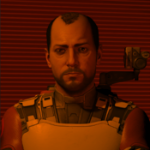Profil du CMDR Luciano Kalabric > Journal de bord

(Mandalay)

I am trying to be a good Samaritan. In Inara, under the menu Galaxy - Conflicts https://inara.cz/elite/thargoidwar-conflicts/, one can find opportunities to help systems under attack! The pick of this war was months ago, but there are systems under alert or invaded already. My main concern is to evacuate people, but you can help in another way: fighting! Hopefully, we will develop some sort of weapon that gets rid of the Titans sometime shortly. While this does not happen humanity depends on us!
If you are an explorer, you must pay attention to the Codex. It records all discoveries one makes. Sometimes you want to find someone's discoveries to confirm that data and fill your own Codex. There are different types of notable signals in the Galaxy: astronomical bodies (stars, planets, and moons), biological (organic structures and more than 80 different life form species), geological and anomalies, and xenological (mainly Thargoid objects). For more information, I recommend reading https://canonn.science/.
When one stays long in the deep, it is common for one to want to rush back to the bubble eventually... Thus, I decided to jump more than scan. D-scanner is good for discovering the stars and the number of bodies in a system. However, only FSS is capable of revealing the complete system map which includes all bodies, geological and biological signals, and planetary information such as atmosphere, materials, and life forms present on the surface. Since I am anxious to get back home, I will scan every ten systems instead of doing it in every system.
Thanks to CMDRs owner of FCs scattered through out the Galaxy, any other CMDR can travel around without risking their exploration data. Through Astrometrics Interactive Map, one can find FCs network initiatives such as DSSA, STAR, and IGAU, as well as independent FCs. They provide a safe port including services from repairing and refueling your ship, selling your exploration data, and to resting and relaxing with a drink and chatting with the bartender in their bars. For those interested in flying your own FC, some provide Tritium in deep space. So, you do not need to worry about mining this rare material when you are far way from the bubble.
When exploring, one can take advantage to also level up his/her exobiologist rank. Some biological signals, such as the Bacterium and Fonticulua genera, are widespread, especially in the Icy World and Icy bodies. When you scan a body with only one signal, most likely it will be a Bacterium independent of the type of the body (Icy or Rocky). On the other hand, Rocky and High Metal Content Worlds are more likely to support more signals. Some genera live on flat surfaces, such as Tubus and Stratum, while others like Osseus prefer rugged surfaces. Some are found only in valleys and mountains, like Fungoida and Frutexa. There are plenty of new species variants to be discovered. So, do not lose time and discover the amazing universe of life!
On my way back to the bubble, I crossed part of the Outer Arm region and entered the Vulcan Gate region. Different from Aquila´s Halo, Vulcan Gate is more flourished. The systems are much closer and there is much more to see: at least two Nebulas and many planetary nebulas and POI.
When you are new in the game, most of the time you may decide to fly out of the bubble as an adventurer. Life is short and ED gives you that sensation of freedom. However, when you get mature you understand that you do not need to risk all exploration data in a bad landing! I recommend that all CMDRs take a look at EDSM and ED Astrometrics Interactive Map before doing some craziness. There one can evaluate in advance where you are going and what type of support you can get in case you are in trouble (DSSA, STAR, IGAU, etc). If possible, include stops in remote FC to sell your exploration data and rest before a star gets big in your canopy.
One of the unexplored regions in my codex is Aquila´s Halo. So, I decided to extend my journey from Errant Marches there! To my surprise, there is no POI in the region and some sectors are so sparse that you cannot even calculate a route. Most discoveries were made in the sector next to The Void region. To explore Aquila´s Halo I need to cross part of Outer Arm. Let´s see what I get! One thing I know, I am closer to Colonia than the bubble :( IMPORTANT: In regions like that avoid using Neutron Star routes because you can enter in a death trap! A one-way trip without a way to return :(
Errant Marches is a vast region bordered by The Formide Rift, Elysian Shore, Vulcan Gate, Outer Arm, and Aquila´s Halo. According to the Codex, there are 453 discoveries reported. Star One (closest to Andromeda Galaxy) is the main sightseeing in this region located in the system Byaa Thoi GC-D d12-0. There are no Nebulas in here; only one Black Hole has been discovered so far. My goal is to reach Aquila´s Halo in a couple of days and return to the bubble through Vulcan Gate. Those are the regions a miss to visit in the 3rd quadrant.
During exploration, you will earn notoriety for the Explorer rank by doing three things: discovering astronomical bodies (stars, planets, and moons), scanning the bodies' surfaces (especially water worlds and high-metal planets that are terraformable), and landing on some bodies to discover biological and geological signs. Samples of life forms can be sold at the Vista office and generate good profits. All of this will end up in your Codex and can be confirmed by other CMDRs.